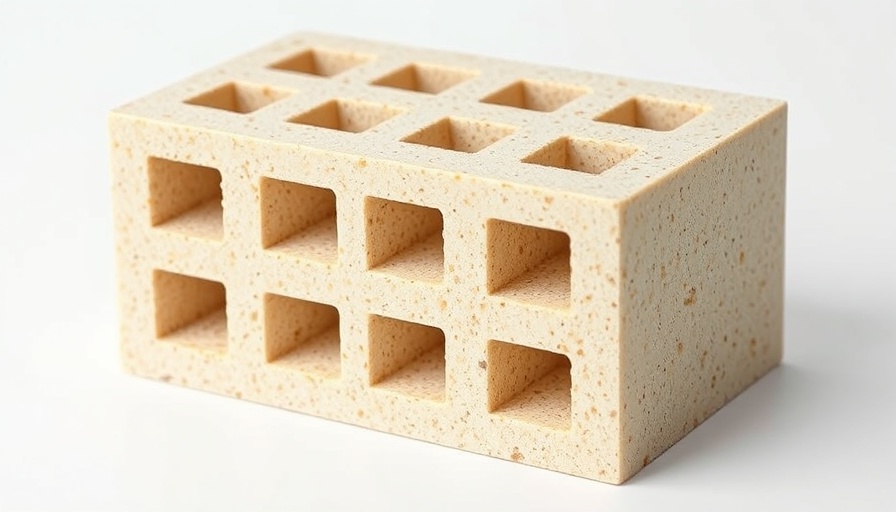
Exploring Paludiculture at Norwich University of the Arts
The Norwich University of the Arts recently showcased an inspiring exhibition titled "FibreBroads: Cultivating Sustainable Futures," where students presented groundbreaking experiments that push the boundaries of sustainable architecture. At this event, ten innovative projects highlighted how materials derived from paludiculture—an agricultural practice that focuses on wetland plants—can revolutionize the construction industry.
Innovative Student Projects
Among the standout presentations was Jacob Cherry's research on creating bricks from phalaris arundinacea combined with zea mays, which revealed exciting architectural possibilities. This composite material demonstrates excellent potential as an insulation brick-block, promising both sustainability and performance. Jacob's pioneering work sets the groundwork for future innovations in the use of paludi-fibres.
Theo Galvin also made waves with his Fibre-Fabrick prototypes made from typha fibre and cotton waste fabrics. By experimenting with integrating paludi-fibre and discarded textiles, Theo illustrated a compelling solution to the growing textile waste crisis, transforming what was once considered trash into valuable building materials. His findings echo a vital message: sustainability can be both innovative and aesthetically pleasing.
The Call to Action for Sustainability
This exhibition isn’t just an academic exercise—it represents a call to action. The students are championing the importance of sustainable architecture and the pressing need to address climate change through innovative building materials. The synergy achieved by combining natural waste with architectural ingenuity serves as a reminder for everyone—homeowners and business owners alike—to reevaluate how we can incorporate sustainable practices in our projects.
Why Paludiculture Matters in Today's World
In a world where the effects of climate change are increasingly concerning, paludiculture offers a unique solution that promotes biodiversity and minimizes waste. Events like FibreBroads not only inspire future architects but also engage local communities in discussions about how each of us can contribute to a more sustainable future. Just imagine the potential if more regions embraced paludiculture—it could lead to a significant shift in construction practices while nurturing our planet.
As we take stock of our individual and collective responsibilities towards the environment, consider how these innovations might inform your home, your garden, or your business. Are there elements of this sustainable approach that could enhance your properties? With excellent resources at hand, it's easier than ever to explore how to transform ideas into actions.
Get Involved in Sustainable Practices
Whether you're a homeowner wishing to improve your space or a business owner looking to adopt greener practices, take a cue from the inspiring work of these students. The future of architecture lies in our hands; supporting sustainable initiatives not only bolsters local economies but also fosters a healthier planet.
If you’re intrigued by these experiments in paludiculture and sustainable architecture, consider visiting the exhibition at Boardman House. It runs until the end of the summer term, offering a valuable opportunity to see how innovative minds are tackling environmental challenges through creativity and resourcefulness. Let’s collectively commit to these initiatives, supporting a future where sustainability is a fundamental part of every project.
 Add Row
Add Row  Add
Add 




Write A Comment